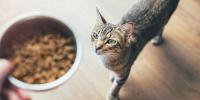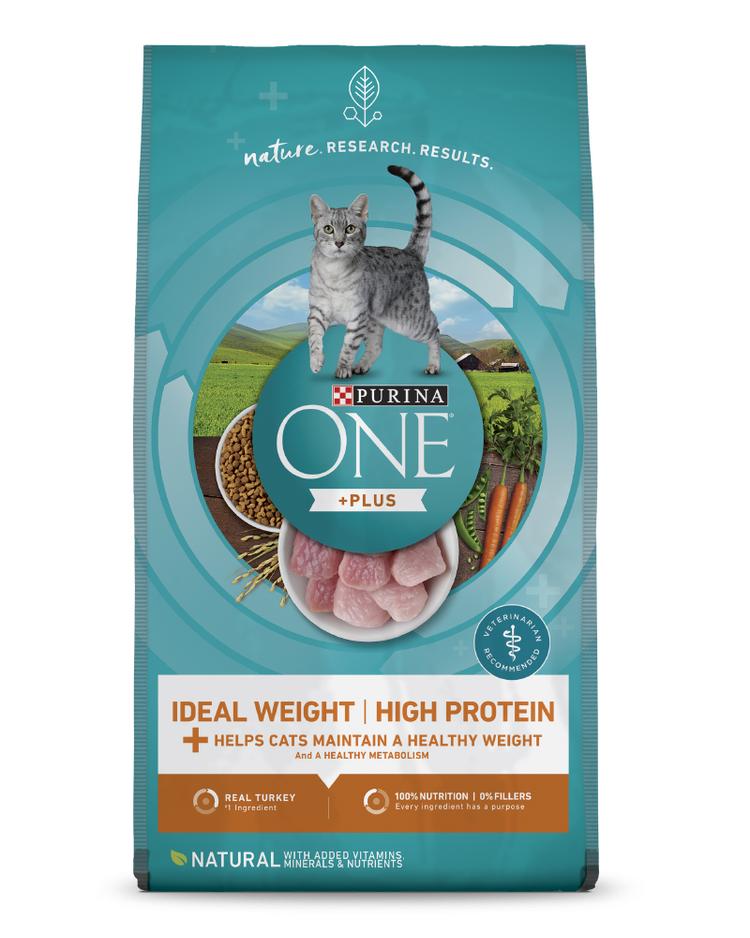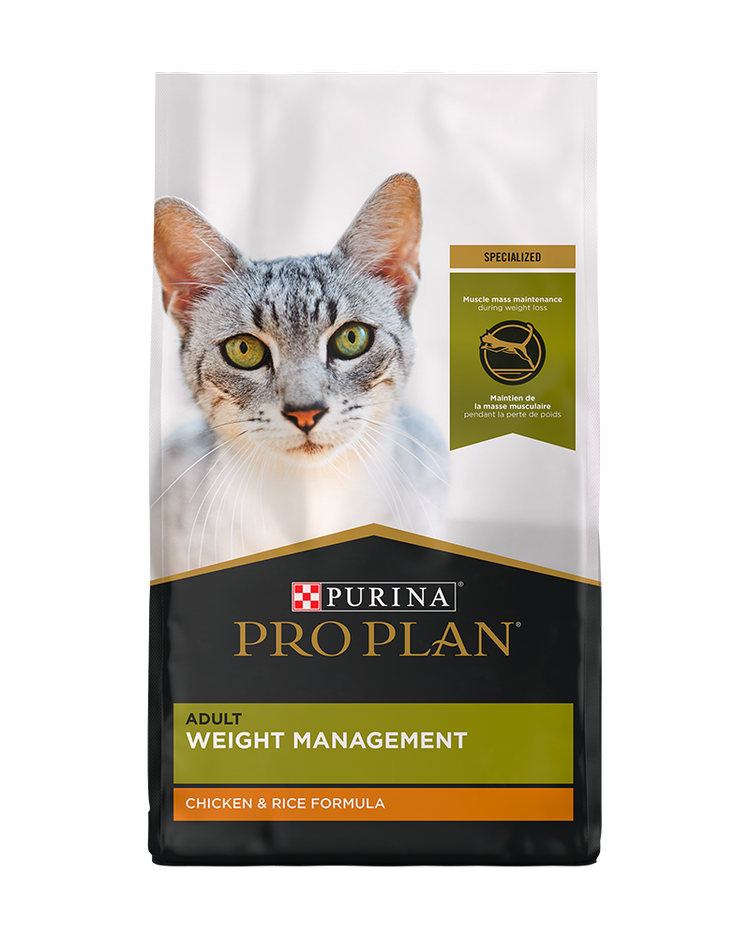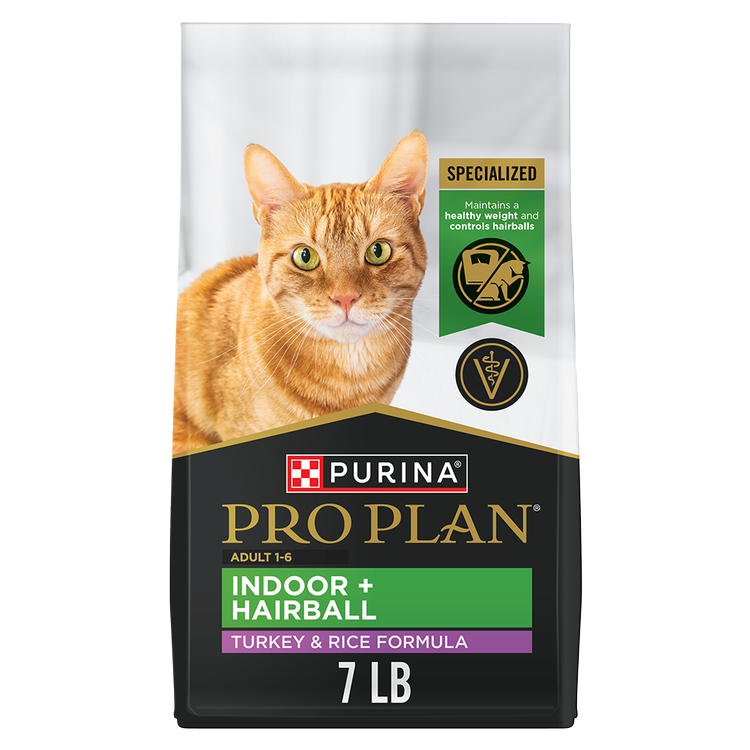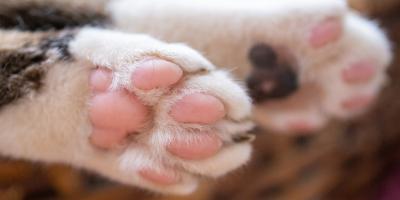Obesity is an epidemic in the U.S., even for cats. Discover what may contribute to your cat being overweight and how you can help improve your cat’s health.
Cat obesity is on the rise. Today, it’s estimated that over 50 percent of cats are overweight or obese.
In some cases, certain health conditions can lead to weight gain and obesity. In other cases, the problem may stem from overfeeding and a lack of exercise. Regardless of the cause, there are steps you can take, like switching your cat’s food, working more playtime into their day and working with your veterinarian, to help them achieve their ideal body condition.
Health Problems Associated With Cat Obesity
Certain health problems can lead to weight gain. Excess weight puts more strain on a cat’s joints and can make it more difficult for them to groom themselves.
Cat obesity can also lead to additional health concerns, such as:
- Liver problems, potentially leading to liver failure
- Cardiac disorders
- Diabetes
- Urinary tract issues, including kidney stones
- Osteoarthritis
- Respiratory (lung/breathing) problems
How to Tell if Your Cat is Overweight
Some cat owners may not realize their cat is overweight. Cat obesity is often overlooked because some cats may not look bulky. Keep in mind that a single excess pound on a domestic shorthair, longhair or medium hair cat is equal to 14 to 15 pounds on a 5’4" woman.
The best way to know if your cat is overweight is to consult your veterinarian. One tool veterinarians use to size up cats is to utilize the Body Condition System (BCS). This system was developed by Purina scientists and veterinarians and is the industry standard for weight assessment. It helps them visually assess your cat’s weight to determine whether they are underweight, overweight or in good shape.
Since all cats are different and there are many breeds with varying degrees of coat thickness, you may find it tricky to assess your cat’s weight. One way to do a home assessment of your cat’s weight is using the Healthy Hug. This video provides step-by-step instructions on how to do it.
If, based on your Healthy Hug, you feel your cat is overweight, you should see your veterinarian for confirmation and advice on what steps to take to help them lose weight.
How to Help Your Cat Lose Weight
The first step in helping your cat drop those unwanted pounds is to meet with your veterinarian and formulate a plan. Measuring how much you’re feeding your cat, including treats, wet food and any human foods, and bringing that to the consultation can help them make a more specific recommendation. Your veterinarian may want to run some diagnostics to find an underlying cause of their weight gain and may suggest changing your cat’s diet to weight management cat food.
A feeding plan adjustment may be in order, as well. On average, a 10-pound cat (in their ideal body condition) needs between 200 and 225 calories a day, depending on their activity levels. You may need to evaluate the number of calories they’re eating versus how much activity they’re getting. Specific mealtimes, as opposed to “free feeding,” can help you better track what your cat is eating.
Aside from feeding adjustments, make sure your cat gets plenty of exercise. If you have a cat who tolerates walking with a harness, daily walks are a great way to help your cat lose weight.
If your cat doesn’t like the harness, that’s okay. A food puzzle is not only a good cat enrichment toy, but ones with flaps, knobs, or anything they must lift or move to get to the food can be good for getting their muscles working.
Multiple playtimes of about 10 to 15 minutes a day will also help your cat get into shape. Whether it’s having your cat chase a ball, a feather wand or a laser pointer guiding them to a piece of kibble from their daily serving, these activities will be a fun way for your cat to shed pounds while the two of you form an even stronger bond.
Treat consumption should make up only 10 percent of your cat’s daily calories, which is about 1 to 2 small treats per day. To help keep “treat time” a part of your bonding experience, you can save three to five pieces of their kibble serving and use those outside of mealtime.
Does Your Feline Friend Need an Obese Cat Diet?
Because every cat is unique, the instructions on the cat food label merely put you in the ballpark of what you should be feeding your cat. If they appear under or overweight, talk to your veterinarian and adjust as needed. Generally, you should be feeding your cat the same amount of food you were feeding them when they were around four months of age.
However, feeding your cat less food is only the answer if you’re overfeeding them. Otherwise, you’re providing them with less of the nutrients they need to stay healthy. If necessary, putting your cat on a weight management diet can be an excellent option for helping your cat shed that extra weight. Many of these foods are formulated with extra vitamins and minerals to ensure they’re getting everything they need while you are decreasing the calories you feed them.
These diets are typically designed to make your cat feel satiated after a meal, have an increased protein-to-calorie ratio, and contain carnitine to help maintain muscle health during weight loss. Keep an eye on how many calories each serving contains and talk to your veterinarian about what they think is the appropriate calorie intake for your cat.
Weight management diets can help your cat achieve and maintain a healthy weight.
While it seems like there’s a lot to keep in mind during your cat’s weight loss journey, it isn’t all that complicated. Plus, with the help of your veterinarian, you won’t be in it alone. After coming up with a plan, all you need to do is stick with it (and ensure the whole family is on board) and your cat should be on their way to weight loss success.
Once your cat reaches their ideal body condition, you may notice some positive differences in their demeanor. They’ll likely be more active and more engaged than they were when they were overweight.
For more insights into cat health, visit our Pet Expertise page and get unique insights from our experts.
Related articles

Earn myPurina Rewards with Every Purchase
Use your points for treats, toys, and gift cards with myPurina app.


